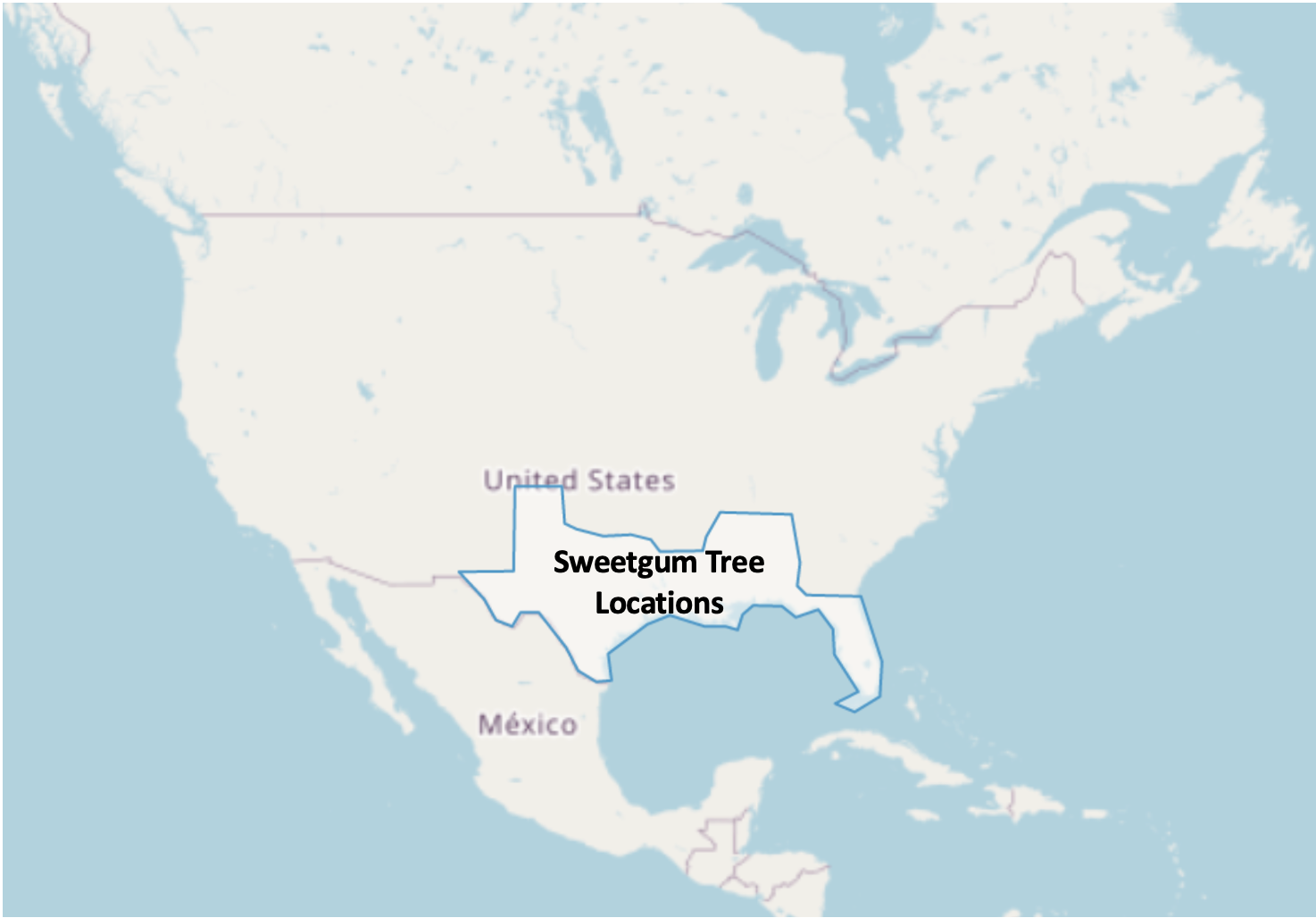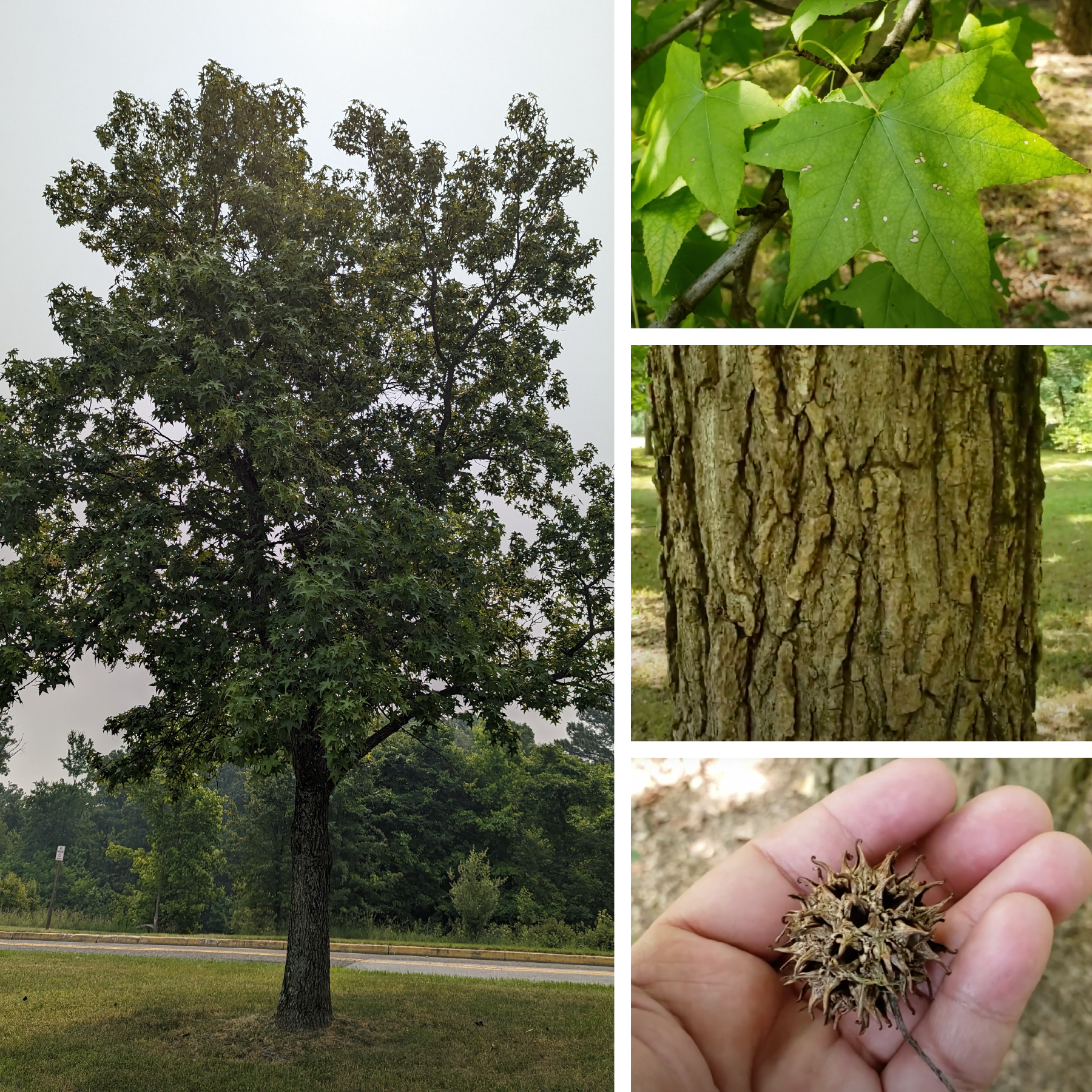NASA Moon Trees - Sweetgum - GLOBE Observer
NASA Moon Trees - Sweetgum

The Apollo 14 Mission's Sweetgum Moon Trees and other sweetgum trees grow in the Gulf Coast states of Alabama, Florida, Louisiana, Mississippi, and Texas. Please note that sweetgum trees are commonly used in landscaping and may be found in parks, arboreta, yards, and other locations well-outside their native range.
Sweetgum (Liquidambar styraciflua), also called redgum, sapgum, starleaf-gum, or bilsted, is a common bottom-land species of the South where it grows biggest and is most abundant in the lower Mississippi Valley. This moderate to rapidly growing tree often pioneers in old fields and logged areas in the uplands and Coastal Plain and may develop in a nearly pure stand. Sweetgum is one of the most important commercial hardwoods in the Southeast and the handsome hard wood is put to a great many uses, one of which is veneer for plywood. The small seeds are eaten by birds, squirrels, and chipmunks. It is sometimes used as a shade tree. (Source: USDA Forest Service 
How to identify sweetgum trees:
Sweetgum trees are deciduous trees with green star-shaped leaves that grow toward the tip of the twigs and have 5-7 lobes. It has rough, ridged brown to brown-gray bark, is typically tall and shady. The tree produces globe-shaped, spiky fruit that ranges in color from green during the growing season to brown in the fall. Learn more:
ID That Tree: Sweetgum | Purdue Extension Forestry & Natural Resources 
American Sweetgum | University of Nebraska School of Natural Resources 
Several free apps will help you identify tree species, including LeafSnap 


Example images of sweetgum trees:

How to participate in the quest for the sweetgum trees:
1. Identify sweetgum trees and take their height (and optional tree circumference if you have a tape measure handy) with the Trees tool in the GLOBE Observer app. Make sure you can clearly see the top and bottom of the tree and and that you can walk to the base of the tree from an origin point of 25-75 feet away from the tree. Before submitting your observation, please type "#MoonTree" in the comment box.
2. The app will notify you if you are within a certain distance from from an existing Apollo 14 Sweetgum Moon Tree. If you are able to find a specific Apollo 14 Sweetgum Moon Tree, please take a tree height observation (and optional tree circumference if you have a tape measure handy). Add "#MoonTree" in the comment box.
Note: Our information regarding the location and status of the existing Apollo 14 Moon Trees is based on the NASA Moon Trees Archive 
Accessible Apollo 14 Sweetgum Moon Trees:
(Click on the links below to learn more about each of the Apollo 14 Moon Trees from the NASA Moon Trees Archive)
Indiana
Tell City, Indiana. Forest Service Office* 
Virginia
Hamilton, Virginia. Scott Jenkins Memorial Park 
To see the locations of all known Moon Trees, visit the NASA Moon Trees Archive 








